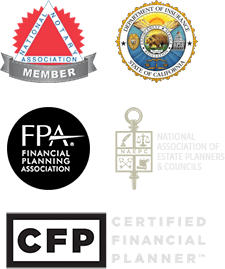By Anne Shim, Mason and Associates
Often touted as a defining characteristic of the Millennial Generation, Americans are now transitioning from job to job at an alarming rate. In 2014, the Bureau of Labor Statistics reported that the typical US worker stayed on the job for 4.6 years.[1]
Another report published in 2015 by the Bureau of Labor Statistics notes that the average worker holds 11 jobs from age 18 to 46.[2] With the rising popularity of 401(k) plans in lieu of traditional pension plans, many workers gather up quite a collection of 401(k) accounts as they move from job to job.
What Are Your 401(k) Plan Options?
Many workers aren’t sure what their 401(k) choices are when they leave a company. When it comes to company-sponsored 401(k) retirement plans, there are four different options available to you:
1. Leave the Plan With Your Previous Employer
This is the simplest option because it doesn’t require you to take any additional steps. However, it might not be an option for everyone. If your account holds less than $1,000, your employer is allowed to automatically cash out your account when you leave. If your account holds between $1,000 and $5,000, most companies will automatically roll your account into an IRA for you when you leave. In general, you need to have over $5,000 in your account to have the option of leaving it in place.
If you can leave the plan where it is, there are a few benefits available to you. If you turned 55 before leaving the job, then you can take penalty-free withdrawals before turning 59 ½. With the company plan, you may have lower priced or unique investment options that will no longer be available to you if you move the money. Also, because of federal law, your money is safer from creditors in a 401(k) plan than in an IRA if you go through bankruptcy.
Unfortunately, there are also some downsides to leaving your money behind when you move on. You will no longer be able to contribute to your plan or take a loan from it. You are limited to the investment options the company offers, which may have higher fees or lower returns than you can find elsewhere. You are also limited in your withdrawal options. Instead of taking a partial withdrawal you may be forced to take the whole amount. If you like having your money in a 401(k), but don’t like your previous company’s plan, there is another option.
2. Move Your 401(k) Balance into Your New Employer’s Plan
Not all employers accept rollovers from other plans, so you will have to consult with your new plan administrator to see if this choice is available to you. People often choose this approach as a way to consolidate assets into one account instead of having multiple small retirement accounts lying around.
Most of the advantages of moving your money into your new employer’s plan are the same as keeping it in the old one, such as creditor protection, possible lower-cost investment options, and unique, plan-specific investment options (which vary by plan).
Also, if the plan allows, you can take a loan against your account, although it is important to remember that it is due in full when you leave that job. The disadvantages to this approach are also the same as the previous option; you are limited in your investment options and subject to the plan rules, which may have certain transaction limits.
3. Cash Out the Account
Although a 2012 report by Transamerica Center for Retirement Studies showed that 25% of unemployed or underemployed workers chose this route, it is almost never a good idea. Withdrawing the funds from your 401(k) account before you are 59 ½ obligates you to pay ordinary income taxes on them as well as a 10% early withdrawal penalty. For someone in the 25% federal income tax bracket paying 7% state income taxes, a $50,000 cash-out would cost them $21,000 in penalties and taxes.
That means essentially forfeiting 42% of your money so that you can have it now instead of later. The only exception is for people who are 55 or older when they leave their job. They still have to pay income taxes on the money, but the penalty is waived. If you find yourself desperate for money, even a loan with 30% interest would be cheaper than cashing out your 401(k) account (if you are under 55).
4. Rollover Your 401(k) into an IRA
When considering what to do with their old 401(k) accounts, many people choose to roll them over into IRAs, or Individual Retirement Accounts. These accounts differ from 401(k)s in a variety of ways. First of all, when you are an IRA account holder, you are the full owner. Whereas with a 401(k) account, the plan trustee owns the assets. Also, unlike your 401(k), your IRA is not tied to a particular employer, therefore changing jobs has no effect on it. A disadvantage of this approach is that you don’t have as much protection from creditors with an IRA as you do under a 401(k) plan.
There are many advantages to having your money in an IRA as opposed to a 401(k) plan. You have much more flexibility with the IRA. You can shop around for low fees and reliable investment options. Instead of being tied to the 20 or so options your company offers, you can invest your IRA in just about anything except life insurance or collectibles. You can even invest your IRA in real estate that you manage through a self-directed IRA. IRAs usually offer much greater flexibility as to who you can name as a beneficiary or contingent beneficiary of the account.
When you roll all of your old 401(k) accounts into an IRA, you can keep adding money to the account, no matter who your employer is in the future. With all of your money in one place, it’s much easier to see the big picture of where you stand financially and manage your asset mix. The IRS even allows you to withdraw earnings penalty-free from your IRA before you turn 59 ½, as long as your account has been open for five years and the money is used for qualified expenses, such as buying your first home, higher education, or medical expenses.
You also have the option to convert to a Roth IRA, which could save you immensely on taxes in the long run and has even more permissive withdrawal rules and no required minimum distributions.
As always, it is a good idea to consult with an experienced financial professional when making changes to your retirement savings plan. A qualified professional can help you understand your options and how they relate to your specific situation, as well as walk you through the process. If you have an old 401(k) account, call my office at (323) 254-3072 or email us at This email address is being protected from spambots. You need JavaScript enabled to view it. .
About Mason & Associates, Inc.
Mason & Associates, Inc. was founded in 1989, specializing in Life Planning for individuals, families and small businesses. Life Planning places a person’s core life values at the heart of the advice process and focuses on the human aspects of financial planning. The result is a truly different type of wealth management experience. We serve as a financial coach, so that when our clients need to make an important decision, they have someone they trust to guide them. We don’t sell products; we create solutions that work in concert to help you reach your goals. Mason Life Planning puts your dreams at the heart of your financial plan
___________
[1] “Employee Tenure Summary,” U.S. Bureau of Labor Statistics, September 18, 2014, , accessed September 08, 2016, http://www.bls.gov/news.release/tenure.nr0.htm.
[2] “Number of Jobs, Labor Market Experience, and Earnings Growth: Results from a National Longitudinal Survey News Release,” U.S. Bureau of Labor Statistics, March 31, 2015, , accessed September 08, 2016, http://www.bls.gov/news.release/nlsoy.htm.





